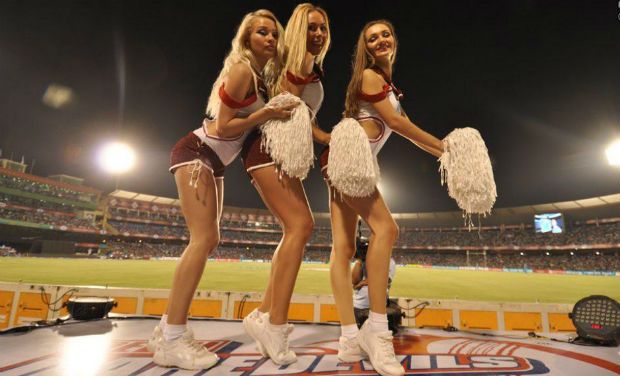The role of sports in women's lives and the role of women in sports has become a gendered question
Three months ago, I resumed playing badminton after an 18-year sabbatical. When I last played, at 12, it was one of the many sports I played thanks to my naval officer father who encouraged—forced—three/four hours of play on me every day. On days we’re not shooting or I’m not meeting a frantic article deadline, my husband and I reach the gymkhana a little before the start of the adults’ slot, as the kids are finishing up their 3-7 timings.
Bucking the trend in this predominantly sedentary country is a group of about 20 boys that plays regularly. These eight- to 13-year-olds are all madly passionate, and some are rather good, shaming me for my lack of stamina and flexibility. In this age group, I have seen just one little girl playing, a dismal 5% of the bunch.
Since April, I’ve noticed a whole herd of 15-year-old girls, abject beginners who’ve never played a sport before. They’re here just after their boards, often prompted by their parents, to lose the weight they gained during the intense preparation months (or maybe always had), in anticipation of starting college. Ditto on the tennis and squash courts.
This, and the recent IPL have got me thinking: What is the role of sport in Indian women’s lives, and the role of women in Indian sport?
The gymkhana where I play is in, arguably, one of Mumbai’s most fancy neighbourhoods. Kids here are wealthy, go to upmarket schools and many go abroad for further studies—society a far cry from a stereotyped India, it would seem, where girls don’t play with boys and help their mothers with household chores after school, if they even go. Yet, few play sport, and exercise is only prioritised for weight loss and to look good.
Looking good also seems to be the only way in which women can participate in the IPL, whether to become a female commentator or a gyrating cheerleader, team-owners and their wives notwithstanding. Young, busty women have peppered this spectacle for its six seasons, knowing little, asking inane questions, providing—and expected to provide—nothing but glam and risqué interludes to the ecosystem of this sportainment.
If the media reflects society, and society reflects the media, we—a country in the throes of introspection about women, and their rights and roles—are stuck in a vicious neverending cycle of misogyny and chauvinism. Through a medium that reaches far more people than Mary Kom’s boxing win or articles about her inspiring story, these PYTs offsetting the brawny boys on the field and the brainy ones in the commentary box reinforces traditional sexist gender roles. Who are we making our role models and what gender roles are we propagating?
It is these gender roles that make scores of young women believe that their bodies are only valuable for their aesthetic appeal, and sport and exercise is only for weight loss—health benefits be damned. I also remember reading an article by the father of a girl who died of bulimia, who blamed his ex-wife for causing her deep-seated self-esteem issues. The wife would, apparently, serve her daughter only skimmed milk and son regular milk, as ‘girls must be slim’.
I have been one of the victims of this misogynistic vanity. Many factors conspired to make me quit sports at 12—my father left the navy, and I moved far from the sporting culture and facilities of the military. I ballooned, and spent my teens and twenties on one diet after another, sporadically dancing and walking, with weight loss being my sole agenda.
And this is me, who has been able to analyse the media’s influence on my body image and knew all the other, more important reasons to exercise. I also continued to get my fair share of attention, even with the excess weight. But that was just intellectual understanding. It is not until a few years ago, under the influence of my friends, sports-loving Sowmya, who has the healthiest body image I know, and Jordyn, a fitness trainer who believes in ‘wellistic wholeness’, that I embraced the idea of loving my body for itself, and for the starring role it plays in my life and lifestyle. No media can convince me that one-size-fits-all or that I am only as good as my body looks.
Far before weight loss and beauty become overriding concerns, parents should put their girls on courts and on fields, and counter the misogyny in our sports and other entertainment. Because for me, a relapsed sports addict, playing for these two serotonin-infused hours every day is about many positive things, including feminism and individualism. I’m in the hallowed male bastion of sports (and I’m playing, not being eye-candy). Fitness as opposed to weight loss alone is a greater, more wholesome body-view than the media propagates. And, there’s the most important factor: if it is my life’s agenda to never let my gender come in the way of living my life, so too with my health and fitness. My body should allow me to leap with the wind in my hair and dance until the sun comes up; withstand a genetic predisposition to heart disease and diabetes; or run and fight for my safety.
So should yours and your daughters’.

